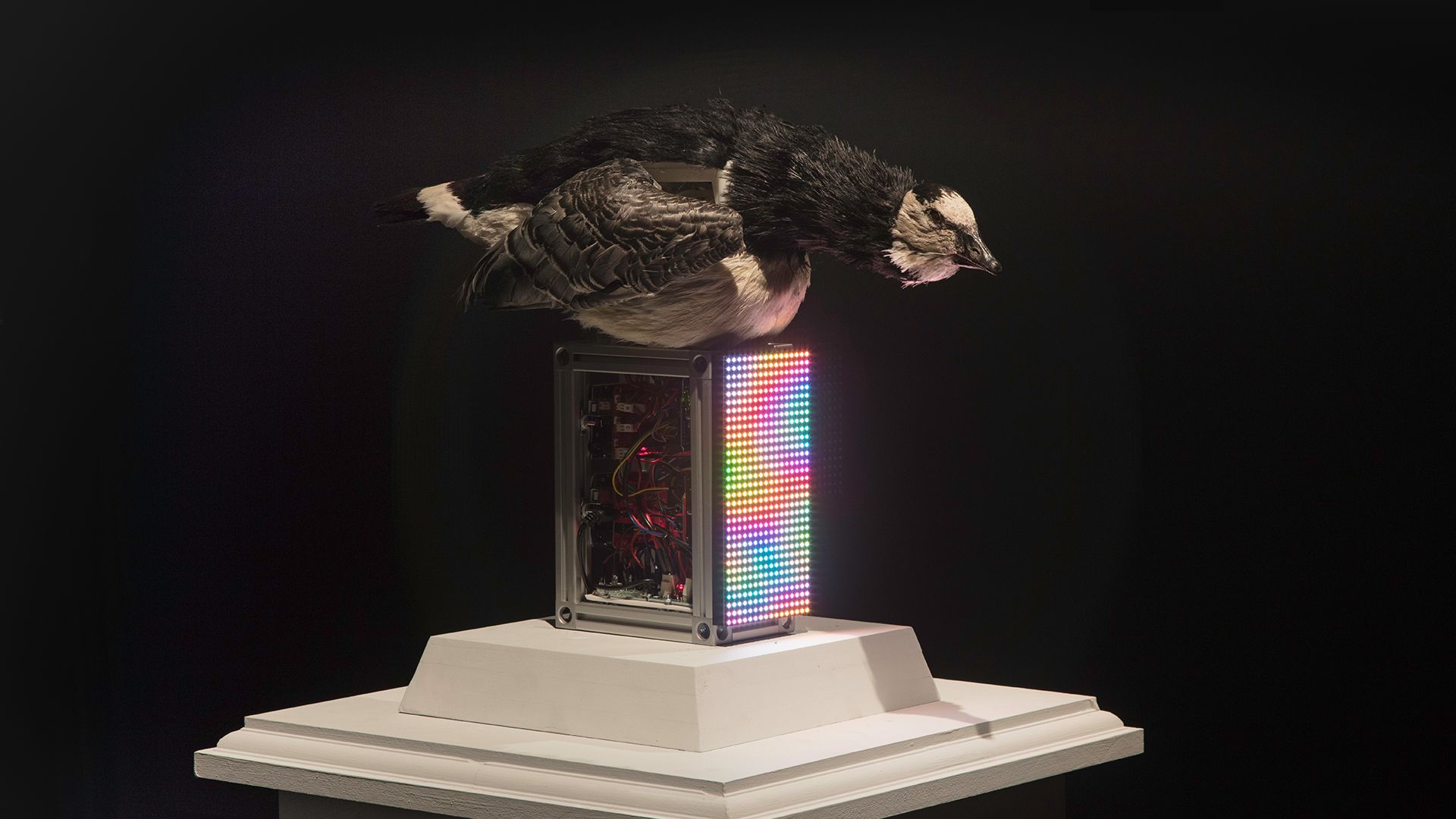
Jacques de Vaucanson was a French inventor in the 18th century, and he was known for automata that mimicked biological vital functions of living creatures. The Digesting Duck he created in 1739 is largely considered to be his masterpiece. This mechanical duck could flap its wings, drink water, eat grains, digest food through its internal organs and then defecate. The Digesting Duck caused quite a sensation at that time in Europe, and the “fraud” wasn’t exposed till a century later when it was realized that Vaucanson had placed bread crumbs to create the illusion that the duck was digesting.
Referencing this historical recount, the artist created two contemporary digesting ducks. The kinetic installations are seen shaking their heads and flapping their wings, while narrating contemporary medical studies on the human microbiome, which is an aggregate of microorganisms that resides in the guts and forms a symbiotic relationship with its host through an extended evolutionary process. It is intricately connected to the human eating habits, emotions, and health conditions. Studies on the human microbiome have led to the medical approach of seeing the stomach and bowels as a mechanical system: Through probiotics and medical procedures, humans are able to reinforce and “upgrade” the microbiome residing in their digestive system.
The materials used in this artwork were acquired from certified taxidermists and the specimens used were birds that have died of natural causes or roadkill.
Commissioned by the Compton Verney Art Gallery (UK).
雅克‧迪‧沃康松是十八世紀的法國發明家,以模仿生物功能的自動機械裝置聞名。一般認為他的傑作是1739年完成的《消化鴨》,這隻機械鴨可以拍動翅膀、喝水、吃下穀物,並且消化、通過腸胃,最後排泄出來。消化鴨在當時歐洲造成轟動,直到百年後才被揭穿為騙局:沃康松事先安裝了麵包塊,創造出鴨子消化的假象。
以此故事為引子,藝術家製作兩尊當代消化鴨,機械裝置搖頭展翅,講述當代醫學對人類微生物群系的研究,這些居住在腸道內的微生物,與宿主在長期進化過程中形成共生關係,與人的飲食習慣、情緒、健康條件息息相關。人類微生物群系的研究,促使醫學上將腸胃當作機械系統的看法:人能夠透過益生菌與醫療程序,來強化與「升級」消化系統裡的微生物聚落。
本作品所有材料來自於專業認證的標本師,以自然死亡或道路意外的鳥類製作。
英國坎頓伯里藝廊委託製作